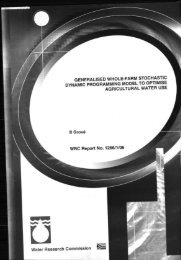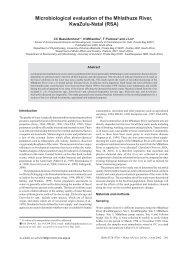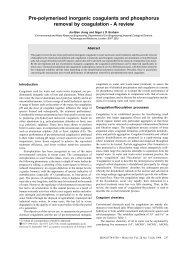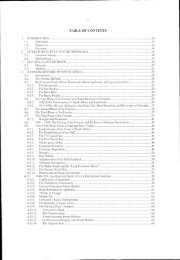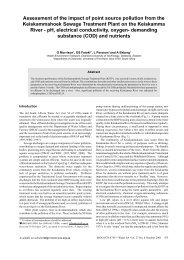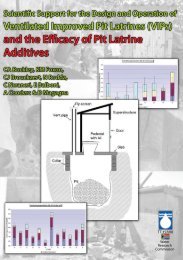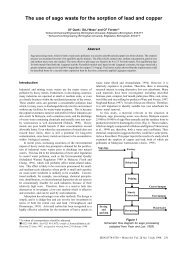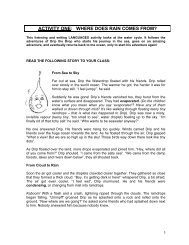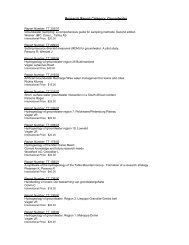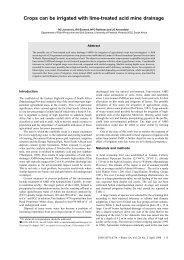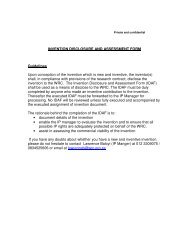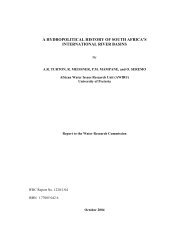A Methods Manual for the Collection, Preparation and Analysis of ...
A Methods Manual for the Collection, Preparation and Analysis of ...
A Methods Manual for the Collection, Preparation and Analysis of ...
You also want an ePaper? Increase the reach of your titles
YUMPU automatically turns print PDFs into web optimized ePapers that Google loves.
1.2 Pre-preparation examination <strong>of</strong> freshly sampled materialA quick examination <strong>of</strong> unpreserved fresh diatom material should be per<strong>for</strong>med on return to<strong>the</strong> laboratory to assess whe<strong>the</strong>r <strong>the</strong> diatom assemblage consists <strong>of</strong> predominantly <strong>of</strong> live cells(It should be noted dead cells will also <strong>for</strong>m part <strong>of</strong> <strong>the</strong> bio-film <strong>and</strong> are not necessarilywashed away under natural conditions).If <strong>the</strong> majority <strong>of</strong> <strong>the</strong> diatoms in <strong>the</strong> freshly collected material are registered as dead cells(empty frustules with no chloroplasts) <strong>the</strong> sample should be discarded, as fur<strong>the</strong>r analysis willnot give a true reflection <strong>of</strong> recent water quality at <strong>the</strong> particular sampling site.1.3 Cleaning techniques with rationaleAny method <strong>of</strong> preparation <strong>of</strong> diatoms <strong>for</strong> microscopy is acceptable, as long as <strong>the</strong> cleanedmaterial meets <strong>the</strong> following criteria: Concentrations <strong>of</strong> cells in <strong>the</strong> cleaned sample should match as closely as possible <strong>the</strong>concentration <strong>of</strong> cells collected in <strong>the</strong> original sample. The organic matter in <strong>the</strong> sample should be completely removed. Foreign matter should ei<strong>the</strong>r be absent or insufficient to cause problems during <strong>the</strong>enumeration or identification <strong>of</strong> <strong>the</strong> specimens.1.3.1 DecalcificationDecalcification is ONLY necessary if samples are to be later treated with nitric or sulphuricacid, as <strong>the</strong>se acids combine with calcium causing <strong>the</strong> <strong>for</strong>mation <strong>of</strong> an insoluble precipitate.This stage can be omitted if you are sure that <strong>the</strong> sample does not come from a site with anycalcareous rock in <strong>the</strong> catchment or if using <strong>the</strong> Hot HCl <strong>and</strong> KMnO 4 method(recommended technique)HEALTH AND SAFETYHydrochloric acid is CORROSIVE <strong>and</strong> OXIDATIVE. Do not per<strong>for</strong>m anyanalysis using this chemical outside <strong>of</strong> a fume cabinet.When h<strong>and</strong>ling HCl wear acid resistant gloves, goggles <strong>and</strong> a lab coat.29



